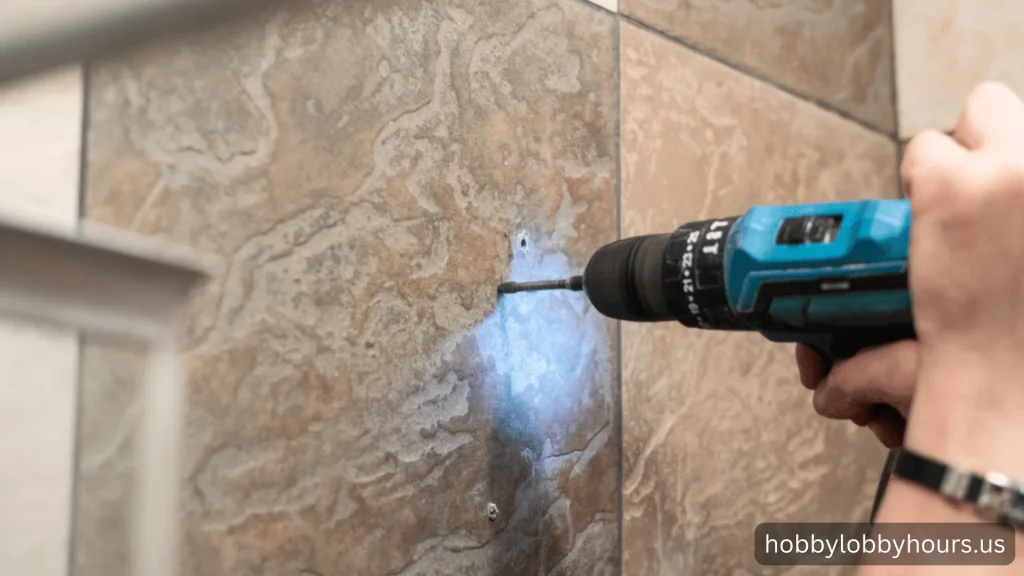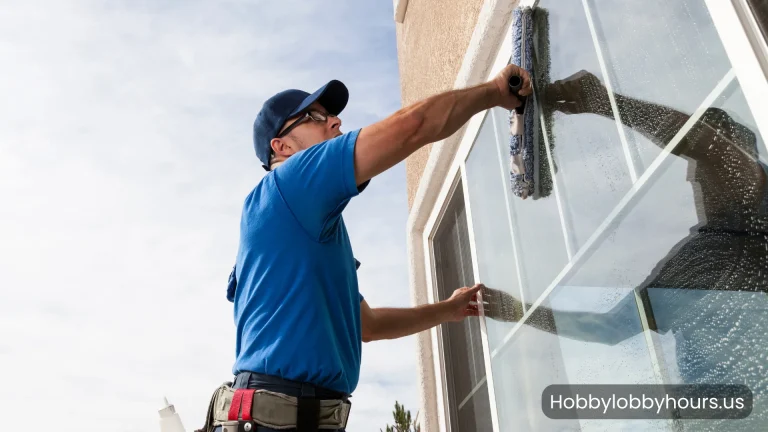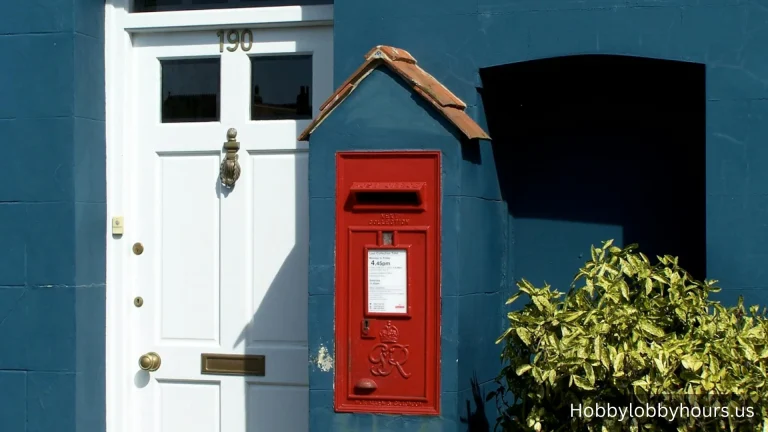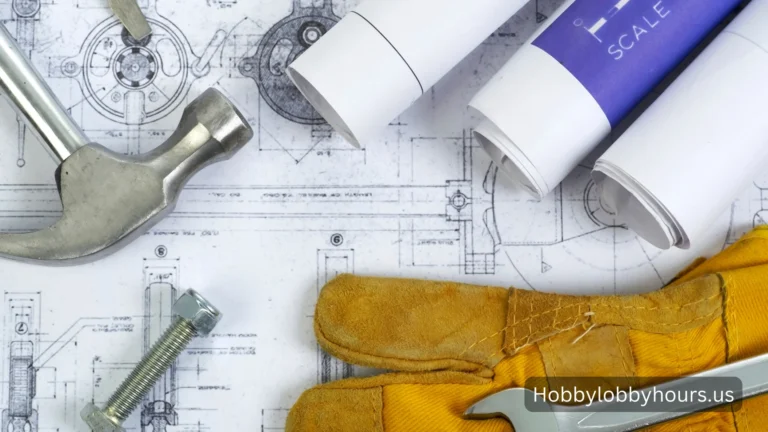Can I drill a hole in ceramic tile without cracking?
With the right tools and know-how, you can drill a hole in ceramic tile without cracking it. Ceramic tiles are brittle, so even a minor mistake can result in cracks or chips that ruin your hard work. With a little preparation and the right approach, you can avoid these problems whether you install a towel rack, a mirror, or a cabinet.
Can I drill a hole in ceramic tile without cracking?
Drilling holes in ceramic tile is possible without cracking it, but you must take special precautions. Here are some tips:
- Use the Right Drill Bit: Drilling ceramic tiles with regular drill bits will not work. Instead, use a drill bit with a diamond or carbide tip.
- Apply Painter’s Tape: You can prevent the drill bit from sliding on the smooth surface of the tile by placing tape over the spot where you plan to drill.
- Go Slow and Steady: You should use a low speed drill and apply gentle, even pressure to avoid damaging the tile.
- Keep the Drill Bit Cool: During drilling, the drill bit will generate heat, which can cause cracks. To prevent cracks, dip the drill bit in water or spray it with water occasionally.
- Start with a Pilot Hole: Drill a small pilot hole first to guide the larger bit and reduce stress on the tiles.
It is possible to drill a hole in ceramic tile without cracking it if you follow these steps.

The types of tiles
It’s important to know what type of tile you’re drilling before you start drilling. Below are three of the most common types, along with their characteristics.
- Ceramic: Unlike other tile types, ceramic is relatively easy to drill through because of its softer composition, but you still need to use the proper technique to prevent cracks.
- Glass: There is a high chipping and cracking risk when drilling glass tiles. You will need special bits and techniques to create clean holes.
- Porcelain: The hardness of porcelain makes it difficult to penetrate without the proper equipment. It is made from finer clay that is fired at higher temperatures, resulting in a more durable and less porous surface.
Getting to know ceramic tiles
Since ceramic tiles are made by firing clay at high temperatures, they create a dense, hard surface that makes them quite fragile when it comes to drilling or cutting.
The glaze on the surface adds another layer of complexity, making it slippery for standard drill bits. This makes them a great choice for bathrooms and kitchens, but it also means that they can crack or shatter under pressure, especially when drilled incorrectly.
The Essential Tools for Drilling Tiles
To drill through tile without causing damage, you need the right tools. Here’s what you need.
Tile drilling bits
Using a carbide-tipped masonry bit is usually sufficient to drill ceramic tile successfully. These bits can withstand the hardness of ceramic tiles and create clean holes with little wear.
The diamond-tipped bits are more expensive, but they can effectively drill through even the hardest tiles. We recommend them for porcelain and glass tiles.
Equipment Not Included
You’ll also need the following tools in addition to the right drill bits:
- Corded or cordless power drill
- When installing multiple fixtures, use a level to ensure straight lines.
- Tape for masking
- Mark drill points with a pencil or marker
- Wear safety glasses and dust masks
- When drilling glass or porcelain, use a spray bottle filled with water to cool the bit.
Also check: Is Polyisocyanurate Safe with Vinyl Floor Plank?
Drilling Through Tiles
Make sure you know how to drill through tile before you pull up your courage and start breaking through. It might seem like a pretty straightforward job, especially if you’re a DIYer who isn’t very familiar with the different types of tiles and their characteristics. However, you can ruin a tile even if you’re CTI certified.
If you’re looking for ways to drill through tile without breaking it, we’ve got plenty of tips for you. However, you shouldn’t forget that these steps won’t guarantee that your tile won’t crack. It will just minimize the chances of it cracking significantly. Here’s how to drill through tiles correctly.
Knowing your tiles is the first step
It is important that you understand the characteristics of the tile you are trying to drill through if you want to learn how to drill through tile.
Ceramic tiles, for example, are less susceptible to being broken through than porcelain tiles, due to their density. It is therefore more difficult to drill through porcelain tiles than it is to cut through other types of tiles. You will also need a specialized drill bit to penetrate porcelain tiles. In the same way, drilling into stone tiles is not an easy task.
Here are the tools you’ll need for this type of project now that you know what you’re up against.
Choosing the right drill bit is the second step
Whenever you bore through tile, never use an old, worn out drill bit. They aren’t as efficient as new ones, and if the drill bit isn’t performing at optimal capacity, you have a higher probability of damaging the tile surface. Additionally, don’t use your regular drill bits for this task. They aren’t strong enough to penetrate the hard tile surface.
Choose diamond-tipped masonry drill bits or carbide-tipped masonry drill bits instead. Even though the first option is more expensive, it is exceptionally durable and will not burn out as easily as masonry bits. It can bore through even the hardest tile surfaces, such as porcelain, even if they are hard.
While masonry drill bits are commonly used for drilling through tile, diamond-tipped drill bits are probably the most commonly used type. For porcelain stoneware and harder materials, you will need diamond drill bits, although this type of drill bit will work on glazed tiles and stoneware.
Measuring and marking the area
Drilling holes in tiles can be challenging because the bits tend to slide around on the surface, making it difficult to maintain control. One wrong move could result in scratches or worse, cracks.
Using masking tape over the area where you want to drill a hole is a simple way to create tension. Mark the area with an X, then place the masking tape. Once the masking tape is placed, you should measure it again to make sure that the hole was not misplaced. In this way, you will have sufficient surface traction when you begin drilling.
A block of wood can be used as a template if you need to drill more than one hole. Place it over the drill hole with your free hand and hold it firmly with your free hand. Make sure the hole is the same size as the drill bit you will be using.
Starting the drilling process
If the surface has been marked or the template has been placed, then it is time to begin drilling.
If you attempt to drill through tiles without taking your time, you might damage all your hard work. Although, we’re not sure if you can call this a problem.
The most important thing to remember when drilling through tile is to be patient. Don’t think that going at full speed is more effective. It might take some time for you to penetrate the hard glazed surface. Start drilling on a low speed and slowly. If you try to drill at full speed, you will only overheat everything and create vibrations that can damage the surfaces.
Cool the drill after each step
You can prevent overheating of the drill bit by cooling it down with a small wet sponge.
As long as you don’t pour water into the drill’s motor, it’s okay to stop periodically and spray some water on it. Just be sure not to pour water into the head of the drill.
It’s also a good idea to hold a wet sponge under the drill to keep it cool. In addition to preventing the drill from overheating, you’ll also catch the dust and debris produced by the tiles. The water won’t pour down the wall or all over the floor this way.
It is important to note that diamond bits do not require as much maintenance as carbide drill bits, which stop when they overheat and must always be kept cool. As long as you allow them to cool down from time to time, they will still work even when they heat up. The best way to extend the life of your tools is to drill slowly, do not put too much pressure, and lubricate the drill with cool water to prolong its lifespan.
When you hit a wall, change the bit
It’s almost time to mount the accents. After cutting through the tile without causing any damage, you can breathe a sigh of relief.
You may need to change the drill bit if the anchor isn’t holding properly or if the accents are loose because you will crash into the wall surface. If this happens, your anchor won’t hold properly and the accents will come loose. The secret, however, is to keep the drill slow and steady and you’ll be able to bore a hole even with a drill bit meant for tile.
Drilling through tiles is now the next step
Now that you are confident in your abilities, take a step back and admire the result. Perhaps even give yourself a pat on the back for doing such an amazing job!
When drilling through tile, you need to remember a few things. Having the right tools is the first thing you need to know. If you don’t have the right drill bit, you’re more likely to screw it up. The second thing you need to remember is patience. If you plan on drilling holes through tiles, you need to take your time and drill slowly and steadily. It is also important to keep everything cool. Overheating is a major cause of tile cracks.
It is also important to be persistent. With practice, this task will become simpler and you will no longer have to worry about drilling through tile.

Drilling large holes in tile: how to do it
It’s faster to use a hole saw for larger holes in tile when installing plumbing fixtures. If you don’t have one, you can drill enough smaller holes around the perimeter of the area to make a “cut” in the tile.
The use of a hole saw
If you do not use your hole saw often, you’ll need an arbor attachment to mount your hole saw to your drill. You can also use a carbide-grit hole saw for professional results.
Using a spray bottle full of water, cool the area. Attach your hole saw to your drill and mark the center. A drill bit can help you align the hole saw with your marking.
Drill at a slow speed and with light pressure to make a guide mark, then slowly increase the speed while maintaining a constant pressure until you have penetrated the tile.
An alternative method for openings of a large size
This alternative method can be used if you don’t have a hole saw.
- With a felt-tip pen or grease pencil, trace the outline of the hole on the tile.
- Drill a series of holes closely spaced around the circle with a 14.5-inch masonry bit. Tap the tile lightly around the ring of holes with a hammer.
- Be patient. The hole will break free eventually if you tap inside the outline.
- With a decorative escutcheon plate, you can hide the rough edge of the hole.
The drill-and-tap technique can also be used to cut out square or rectangular tiles.
For larger holes, use a hole saw
The hole saw attachment is your best option if you need a larger hole for pipes or fixtures. Select one designed for ceramic and drill slowly, steadily, keeping it cool.
Tips for drilling through glazed and unglazed ceramic tiles
The tape trick is essential when drilling ceramic tiles with glazed surfaces. Unglazed tiles do not have the same slick finish, so drilling is easier, but cracks are still possible.
Wall drilling vs. floor drilling
The bit you use for drilling will need to be stronger and more durable for floor tiles, whereas the bit for drilling wall tiles should be thinner and more flexible. Make sure the speed and pressure you use for drilling are sufficient for the floor tiles.
After drilling, securing fixtures
If you have successfully drilled a hole, use ceramic anchors and screws. Light fixtures work well with plastic anchors, whereas heavy items require metal anchors. If the fixture is too tight, the tile can crack. Make sure it is snug but don’t overtighten.
Drilling tiles safely
When working with power tools or tiles, safety should always be your top priority.
Gear for protection
If you drill through ceramic, you may inhale silica dust that could cause chronic respiratory problems if inhaled over a certain threshold. Wear safety glasses and work gloves to reduce the risk of tile chips and sharp edges.
Management of dust
During the drilling process, you can control dust by spraying water during the drilling process and working in a ventilated area.
Conclusion
The process of drilling ceramic tile does not have to be intimidating. It’s important to use the right tools and follow these tips to safely and confidently drill holes without cracking your tiles. Remember, patience is key. Begin slowly, keep the bit cool, and let the drill do its work.
FAQs
Is it possible to drill ceramic tile with a regular drill bit?
Use diamond or carbide-tipped drill bits instead of regular drill bits, as they are designed to handle the hardness of ceramic.
What is the best drill bit for ceramic tile?
When it comes to ceramic tiles, diamond-tipped drill bits are the best option, as they cut smoothly without causing any damage.
What should I do if a tile is cracked?
In cases of small cracks, epoxy can be applied, but in cases of larger cracks, the tile will need to be replaced.
Is it necessary to hire a professional to drill into ceramic tiles?
Even though a professional can do the job quickly, you can do it yourself if you have the right tools and patience.
When drilling through ceramic tile, how long does it take?
Typically, it takes just a few minutes, depending on the tile thickness and hole size.








